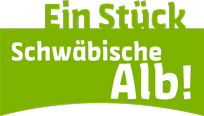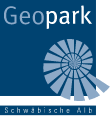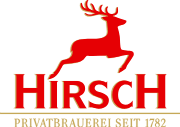Caves – Growing stones – works of art from the underworld
Stalactite caves in the Donaubergland
There are two accessible stalactite caves in the Donaubergland:
The Kolbing Cavealso called Stephanshöhle, and the Mühlheim Rock Cave.
Inside the mighty karst caves in the Swabian Alb, it is dark, cool and damp. But with a little light, you can see fantastic formations on the ceiling and floor: stalactites. They are formed over millions of years by dripping water. These fascinating formations are guaranteed to stimulate the imagination.
Fairytale figures, legendary locations and creatures from mysterious worlds – you can recognize many things in the bizarre limestone deposits. Plenty of discussion material for every family.
Many things are explained by the cave guides of the respective local groups of the Swabian Alb Association, with whom you can go into the cave, but some things are – fortunately – also left to your own imagination.
It is unlikely that humans have lived here, but one or two bears may have hibernated here in the past. Today, the bats are allowed to enjoy their hibernation in the cave in winter. This is why the caves are closed in winter.
In summer, the temperature inside the caves is around 8 degrees Celsius, so it is best to bring a warm jacket for the cave tour.
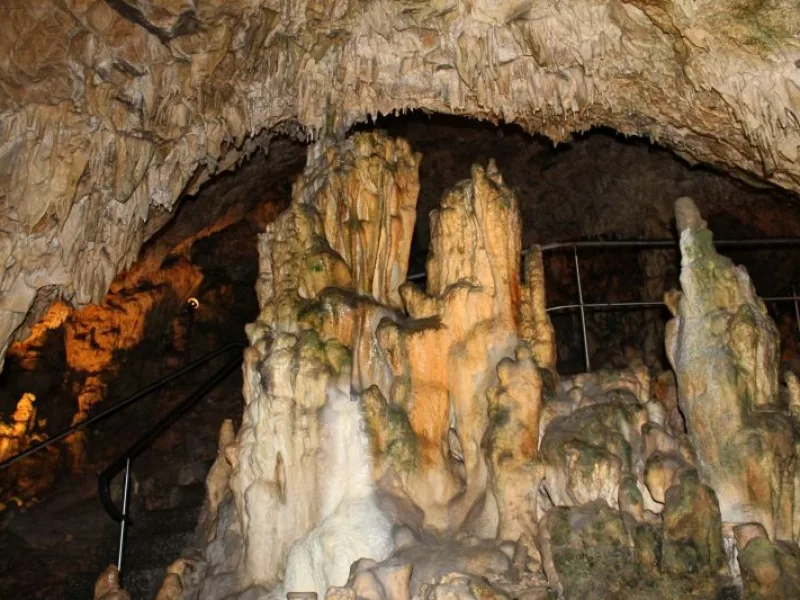
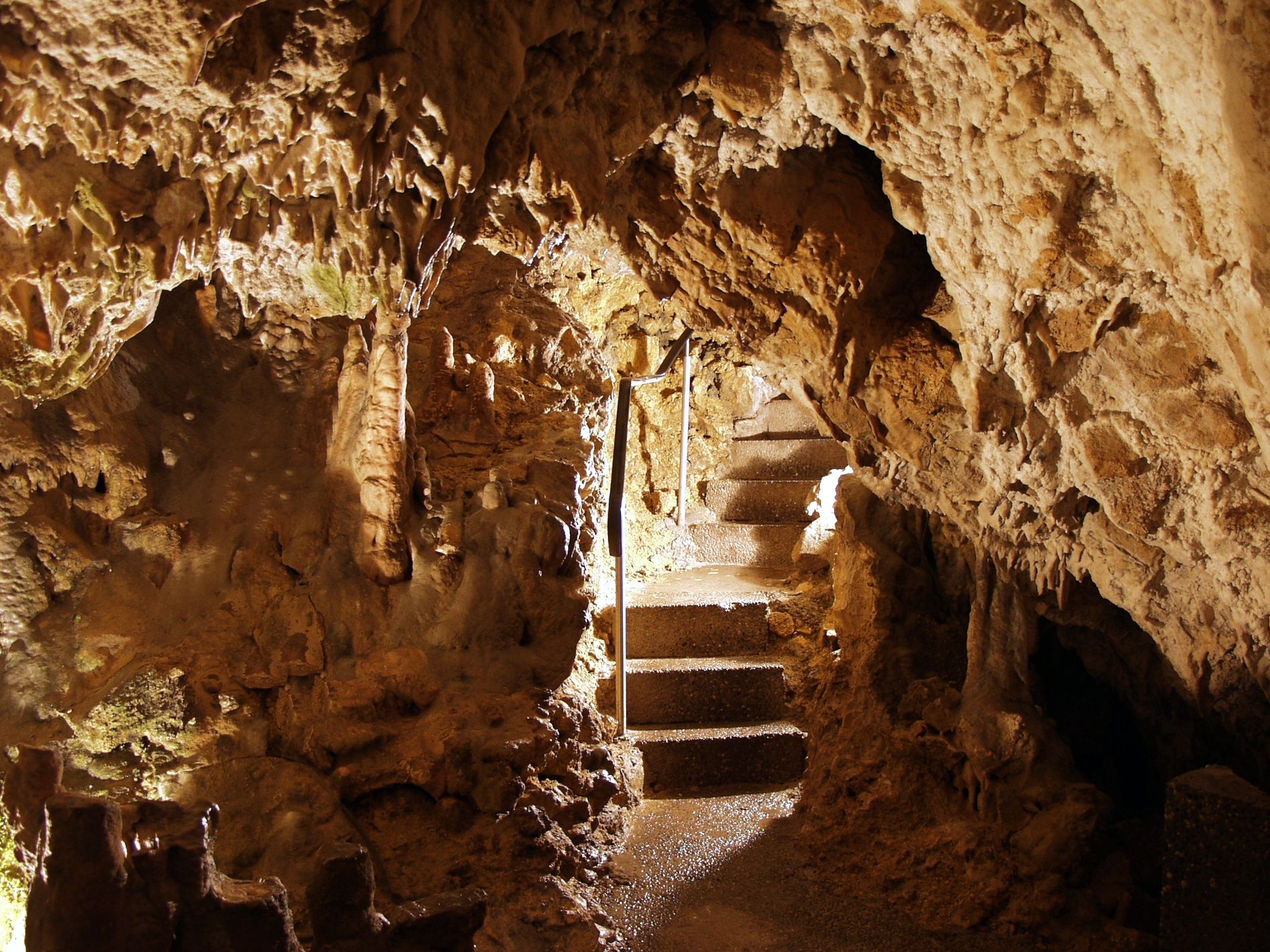
The Kolbing Cave
The Kolbingen cave is regularly open at weekends in summer. Everything you need to know about visiting the cave is available from the Albverein Kolbingen.
Mülheim rock cave
Despite its name, the Mühlheim Rock Cave is also a stalactite cave. It is open twice a year, on Ascension Day and on Cave Day on the last Sunday in August. There is also a cave festival organized by the Swabian Alb Association with refreshments.
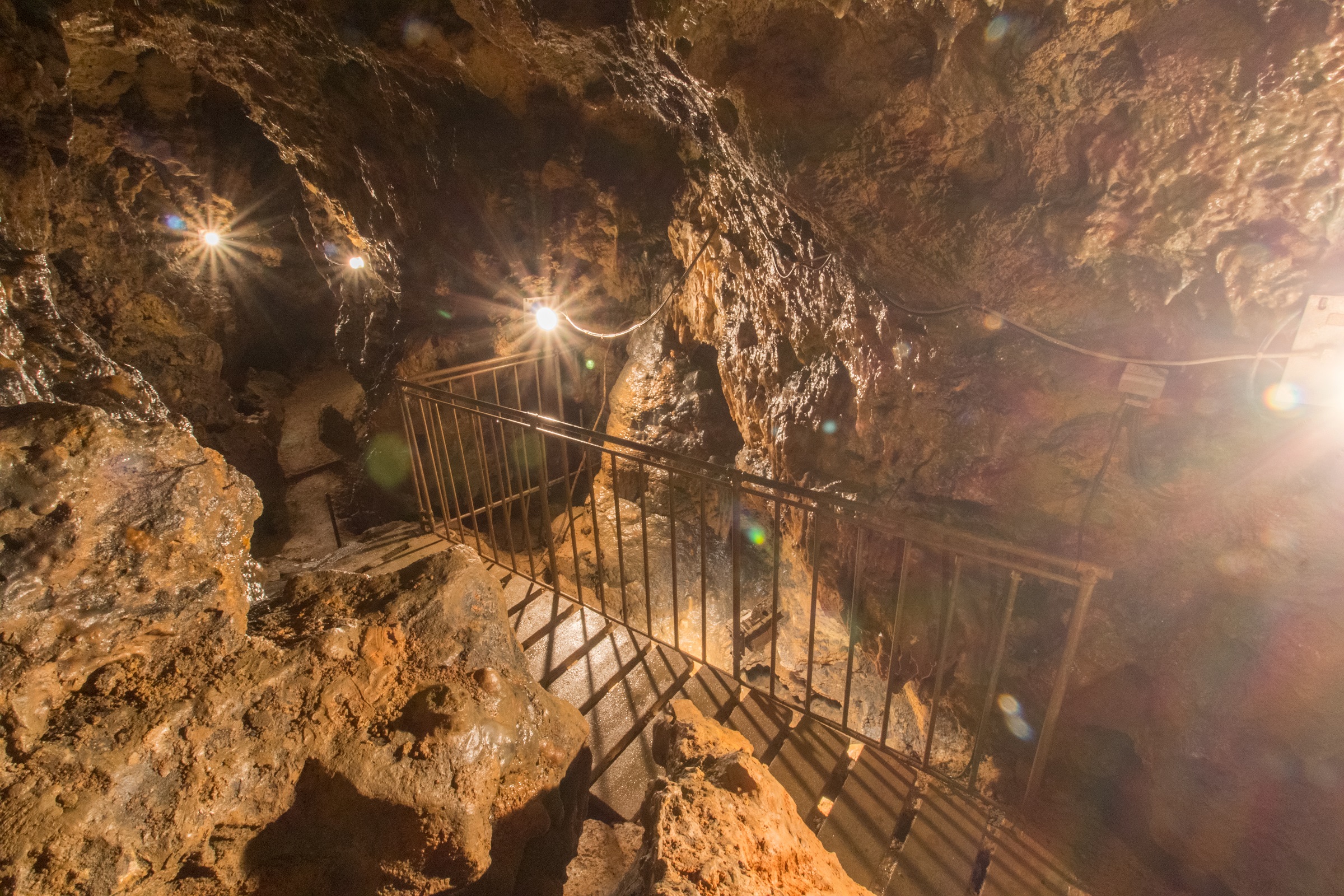
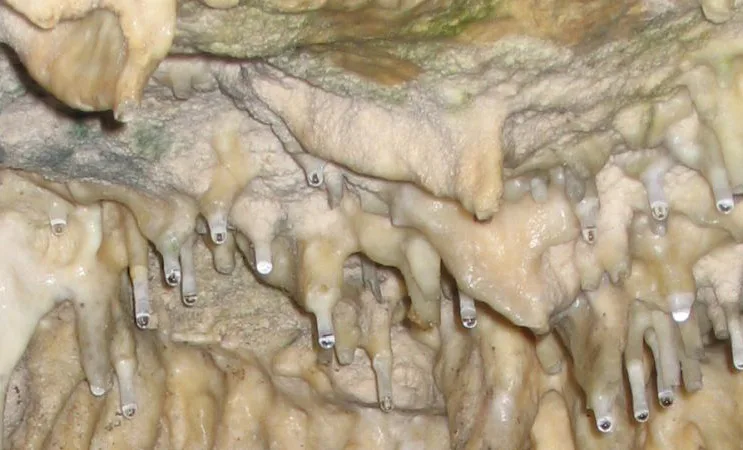
How stalactites are formed:
Have you ever heard of stalactites and stalagmites? That’s what the stalactites in the caves of the Swabian Alb are called.
What happens here? Calcareous water drips through the limestone of the cave ceiling. This is because the surface water gradually dissolves the lime from the rock.
The lime is then deposited on the ceiling and floor and, over the course of thousands of years, forms bizarre shapes from the deposits. They either hang from the ceiling, in which case they are called “stalactites”. Or they grow upwards from the floor and are then called “stalagmites”.
In some caves, such as the Kolbing Cave or the Mühlheim Rock Caveyou can admire meter-high dripstones that continue to grow millimeter by millimeter. In one hundred years, a stalactite grows about nine millimetres, in 10,000 years it can reach a height of up to one meter – quite a long time!
The Swabian Alb karst mountains
The Swabian Alb is a karst mountains. The soil consists of layers of limestone. The limestone is slowly dissolved by the carbonated rainwater. This “karstification” of the Alb has led to a large number of caves, sinkholes, dry valleys and karst springs. Over thousands of years, the water has washed deeper passages and caves out of the limestone and flows through the limestone mountains in layers of caves of varying depths. Bit by bit, the karst water level sinks, the water has eaten deeper and deeper, so that many caves fall dry. First the water dissolves the lime from the rock and then, as it evaporates and dries out, the lime is released from the water at the ceiling of an air-filled cave. Carbonic acid escapes from the water and the excess lime is deposited drop by drop as stalactites.
Our recommendations
for hiking and cycling tours
Newsletter
Do you want to keep up to date with the latest news from the Donaubergland? Then sign up now for our newsletter.
AlbCard
By the way, absolutely attractive: the AlbCard – the guest card for the whole of the Swabian Alb – is also available from selected businesses in the Donaubergland.

